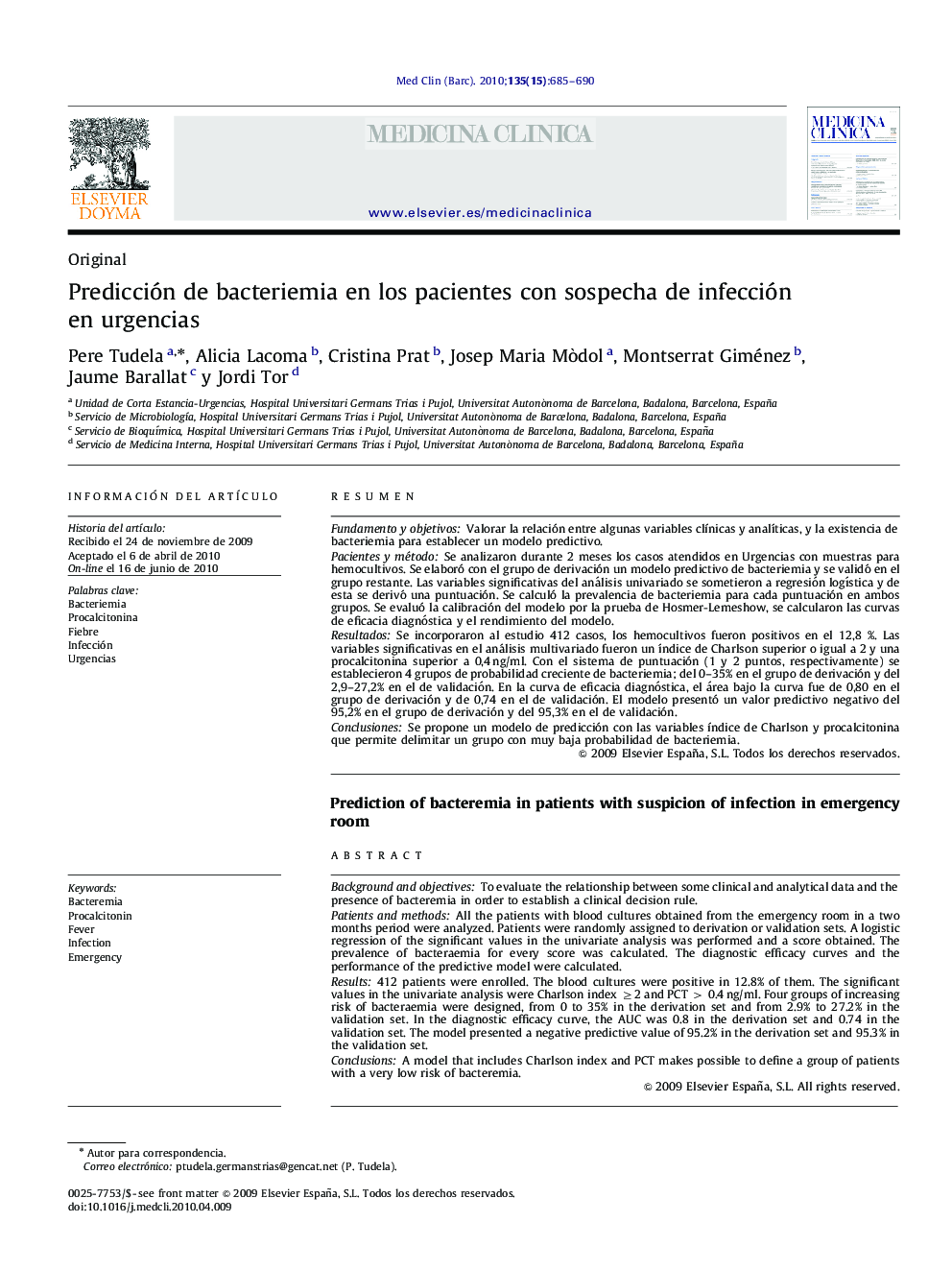| Article ID | Journal | Published Year | Pages | File Type |
|---|---|---|---|---|
| 3800758 | Medicina Clínica | 2010 | 6 Pages |
ResumenFundamento y objetivosValorar la relación entre algunas variables clínicas y analíticas, y la existencia de bacteriemia para establecer un modelo predictivo.Pacientes y métodoSe analizaron durante 2 meses los casos atendidos en Urgencias con muestras para hemocultivos. Se elaboró con el grupo de derivación un modelo predictivo de bacteriemia y se validó en el grupo restante. Las variables significativas del análisis univariado se sometieron a regresión logística y de esta se derivó una puntuación. Se calculó la prevalencia de bacteriemia para cada puntuación en ambos grupos. Se evaluó la calibración del modelo por la prueba de Hosmer-Lemeshow, se calcularon las curvas de eficacia diagnóstica y el rendimiento del modelo.ResultadosSe incorporaron al estudio 412 casos, los hemocultivos fueron positivos en el 12,8 %. Las variables significativas en el análisis multivariado fueron un índice de Charlson superior o igual a 2 y una procalcitonina superior a 0,4 ng/ml. Con el sistema de puntuación (1 y 2 puntos, respectivamente) se establecieron 4 grupos de probabilidad creciente de bacteriemia; del 0–35% en el grupo de derivación y del 2,9–27,2% en el de validación. En la curva de eficacia diagnóstica, el área bajo la curva fue de 0,80 en el grupo de derivación y de 0,74 en el de validación. El modelo presentó un valor predictivo negativo del 95,2% en el grupo de derivación y del 95,3% en el de validación.ConclusionesSe propone un modelo de predicción con las variables índice de Charlson y procalcitonina que permite delimitar un grupo con muy baja probabilidad de bacteriemia.
Background and objectivesTo evaluate the relationship between some clinical and analytical data and the presence of bacteremia in order to establish a clinical decision rule.Patients and methodsAll the patients with blood cultures obtained from the emergency room in a two months period were analyzed. Patients were randomly assigned to derivation or validation sets. A logistic regression of the significant values in the univariate analysis was performed and a score obtained. The prevalence of bacteraemia for every score was calculated. The diagnostic efficacy curves and the performance of the predictive model were calculated.Results412 patients were enrolled. The blood cultures were positive in 12.8% of them. The significant values in the univariate analysis were Charlson index ≥2 and PCT > 0.4 ng/ml. Four groups of increasing risk of bacteraemia were designed, from 0 to 35% in the derivation set and from 2.9% to 27.2% in the validation set. In the diagnostic efficacy curve, the AUC was 0.8 in the derivation set and 0.74 in the validation set. The model presented a negative predictive value of 95.2% in the derivation set and 95.3% in the validation set.ConclusionsA model that includes Charlson index and PCT makes possible to define a group of patients with a very low risk of bacteremia.
